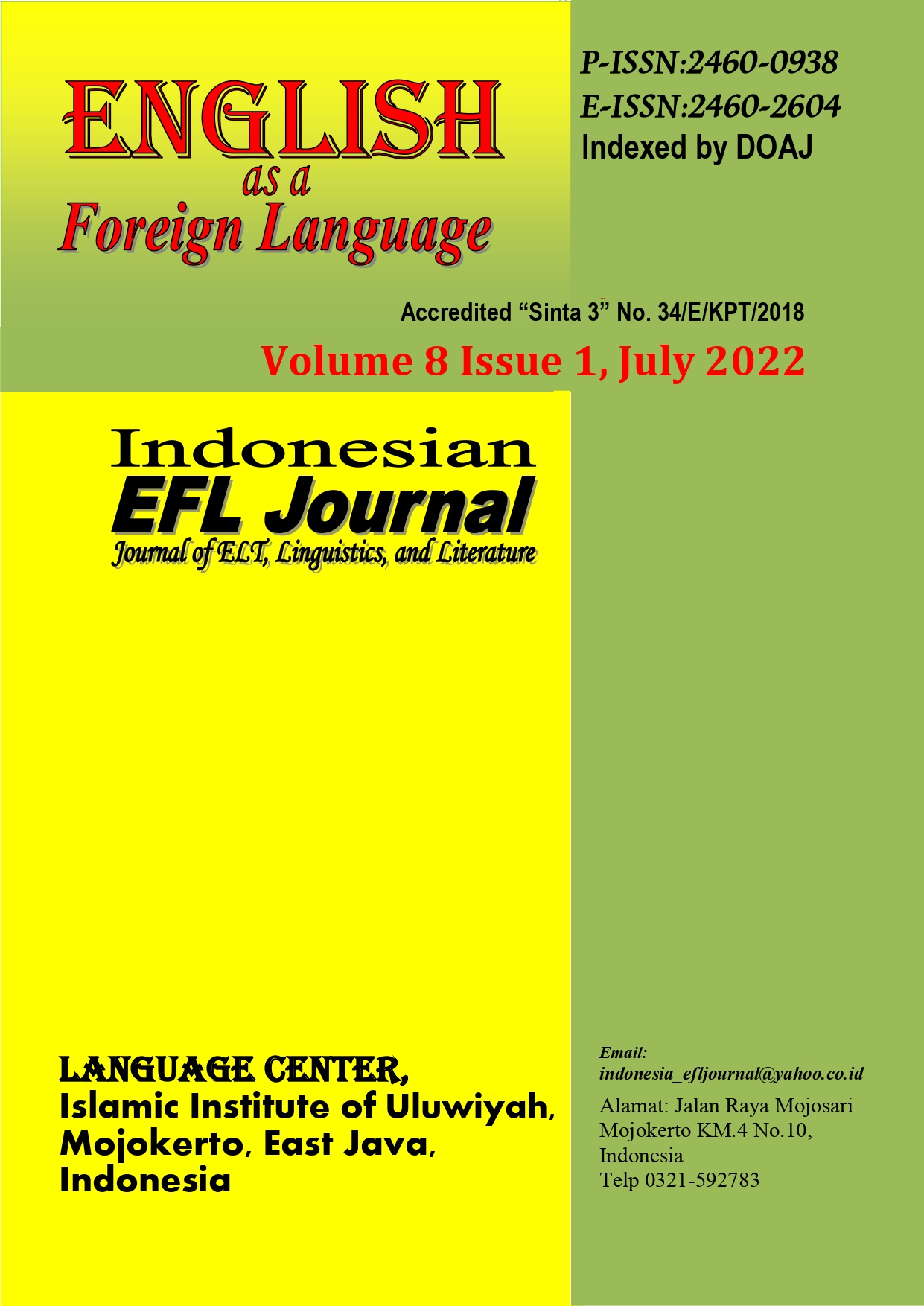An Analysis of Deixis in the Chernobyl Movie Series
Abstract
Language is the most important aspect to support humans in communicating. In communication, people need to understand the meaning of language. Language and context are two inseparable things. In a given context, it is important for listeners or recipients to understand what the speaker meant to say or express. Deixis shows a phenomenon that requires contextual information to understand the meaning of certain words or phrases in their pronunciation. Deixis can be found not only in daily conversations, but also in speeches, films, songs, novels, and the like. This research focuses on deixis in the film Chernobyl in characters that play an important role in the course of the story. The purpose of this study is to find out kinds of deixis that are found in the movie script and to determine the dominant types of deixis. The researchers use descriptive qualitative methods to collect data and have been assisted byAtlas.ti software in data coding. The theory of Levinson is used by the researchers to analyze the type of deixis. In this study, the most dominant deixis is the person deixis (450), the second dominant deixis is place deixis (57), and the third is time deixis (48), followed by discourse deixis (36), and the last is social deixis (26).
References
Albiladi, S, W., Abdeen, F. H., & Lincoln, F. (2018). Learning English through movies: Adult English language learners’ perceptions. Theory and Practice in Language Studies, 8 (12) pp. 1567-1574. DOI: http://dx.doi.org/10.17507/tpls.0812.01
Friese, S. (2012). Qualitative data analysis with ATLAS.ti. London: SAGE Publications.
Hornby, A. S. (1995). Oxford Advanced Learners’ Dictionaryof Current English. New York: Oxford University Press, Fifth Edit.
Jupri, A. (2015). The use of applets to improve Indonesian student performance in algebra. Unpublished Dissertation of Freudenthal Institute for Science and Mathematics Education, Faculty of Science. The Netherlands: Utrecht University.
Levinson. (1983). Pragmatics. London: Cambridge University Press.
Nes, F van., & Doorman, M. (2010). The Interaction Between Multimedia Data Analysis and Theory Development in Design Research.
Ondondo, E. A. (2015). Acquired Language Disorders as Barriers to Effective Communication. https://doi.org/https://doi.org/10.17507/tpls.0507.02
Prastyo, Hari (2008) The correlation between discourse quality and readability of the english reading texts used in the State Islamic Senior High Schools (MAN) Jombang. Undergraduate thesis, Universitas Islam Negeri Maulana Malik Ibrahim.
Retnowati, R. (2019). Deixis in Donald Trump’s Speech to UN general assembly. Lingua Didaktika, 109–122.
Rukminingsih, Wardhono, A., & Rohmawati, P. (2020). Metode Penelitian Praktis (M. Syaifuddin (ed.); 1st ed.). Erhaka Utama. https://scholar.google.com/citations?view_op=view_citation&hl=id&user=tPf_BeMAAAAJ&cstart=20&pagesize=80&citation_for_view=tPf_BeMAAAAJ:L8Ckcad2t8MC
Salsabilla, S. K. (2021). Importance of English for Daily life. Surabaya: ResearchGate.
Silverman, D. (2000). Doing Qualitative Research. A Practical Handbook.
Wardhono, A. (2008). Sense and Reference. Prosody: Jurnal Ilmu Bahasa Dan Sastra, 2. https://journal.trunojoyo.ac.id/prosodi/article/view/340
Yule, G. (2020). The Study of Language. Seventh Ed, New York: Cambridge University Press.
Yule, G., George, & Widdowson, H. G. (1996). Pragmatics. Oxford University Press.
Copyright (c) 2022 Indonesian EFL Journal: Journal of ELT, Linguistics, and Literature

This work is licensed under a Creative Commons Attribution-ShareAlike 4.0 International License.
All rights reserved.
this publication may be reproduced, stored in a retrieval system, or transmitted
in any form or by any means, electronic, mechanical, photocopying, recording.




